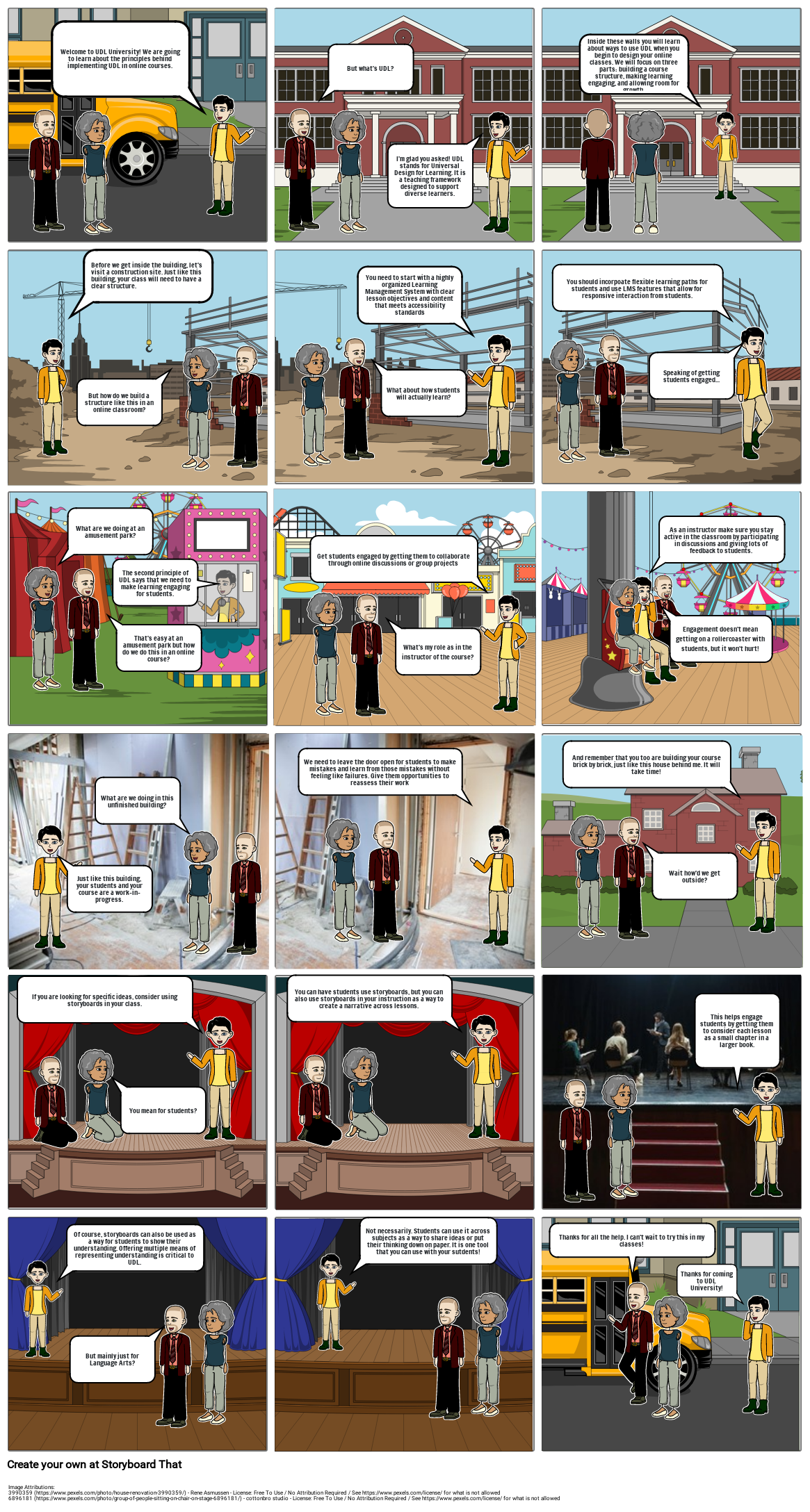UDL Implementation

Siužetinės Linijos Tekstas
- Welcome to UDL University! We are going to learn about the principles behind implementing UDL in online courses.
- But what's UDL?
- I'm glad you asked! UDL stands for Universal Design for Learning. It is a teaching framework designed to support diverse learners.
- Inside these walls you will learn about ways to use UDL when you begin to design your online classes. We will focus on three parts: building a course structure, making learning engaging, and allowing room for growth.
- Before we get inside the building, let's visit a construction site. Just like this building, your class will need to have a clear structure.
- But how do we build a structure like this in an online classroom?
- You need to start with a highly organized Learning Management System with clear lesson objectives and content that meets accessibility standards
- What about how students will actually learn?
- You should incorpoate flexible learning paths for students and use LMS features that allow for responsive interaction from students.
- Speaking of getting students engaged...
- What are we doing at an amusement park?
- That's easy at an amusement park but how do we do this in an online course?
- The second principle of UDL says that we need to make learning engaging for students.
- Get students engaged by getting them to collaborate through online discussions or group projects
- What's my role as in the instructor of the course?
- As an instructor make sure you stay active in the classroom by participating in discussions and giving lots of feedback to students.
- Engagement doesn't mean getting on a rollercoaster with students, but it won't hurt!
- Just like this building, your students and your course are a work-in-progress.
- What are we doing in this unfinished building?
- We need to leave the door open for students to make mistakes and learn from those mistakes without feeling like failures. Give them opportunities to reassess their work
- And remember that you too are building your course brick by brick, just like this house behind me. It will take time!
- Wait how'd we get outside?
- If you are looking for specific ideas, consider using storyboards in your class.
- You mean for students?
- You can have students use storyboards, but you can also use storyboards in your instruction as a way to create a narrative across lessons.
- Storyboards can also be used by your students as a creative way to demonstrate their learning.
- Image Attributions:3990359 (https://www.pexels.com/photo/house-renovation-3990359/) - Rene Asmussen - License: Free To Use / No Attribution Required / See https://www.pexels.com/license/ for what is not allowed6896181 (https://www.pexels.com/photo/group-of-people-sitting-on-chair-on-stage-6896181/) - cottonbro studio - License: Free To Use / No Attribution Required / See https://www.pexels.com/license/ for what is not allowed
Sukurta daugiau nei 30 milijonų siužetinių lentelių

